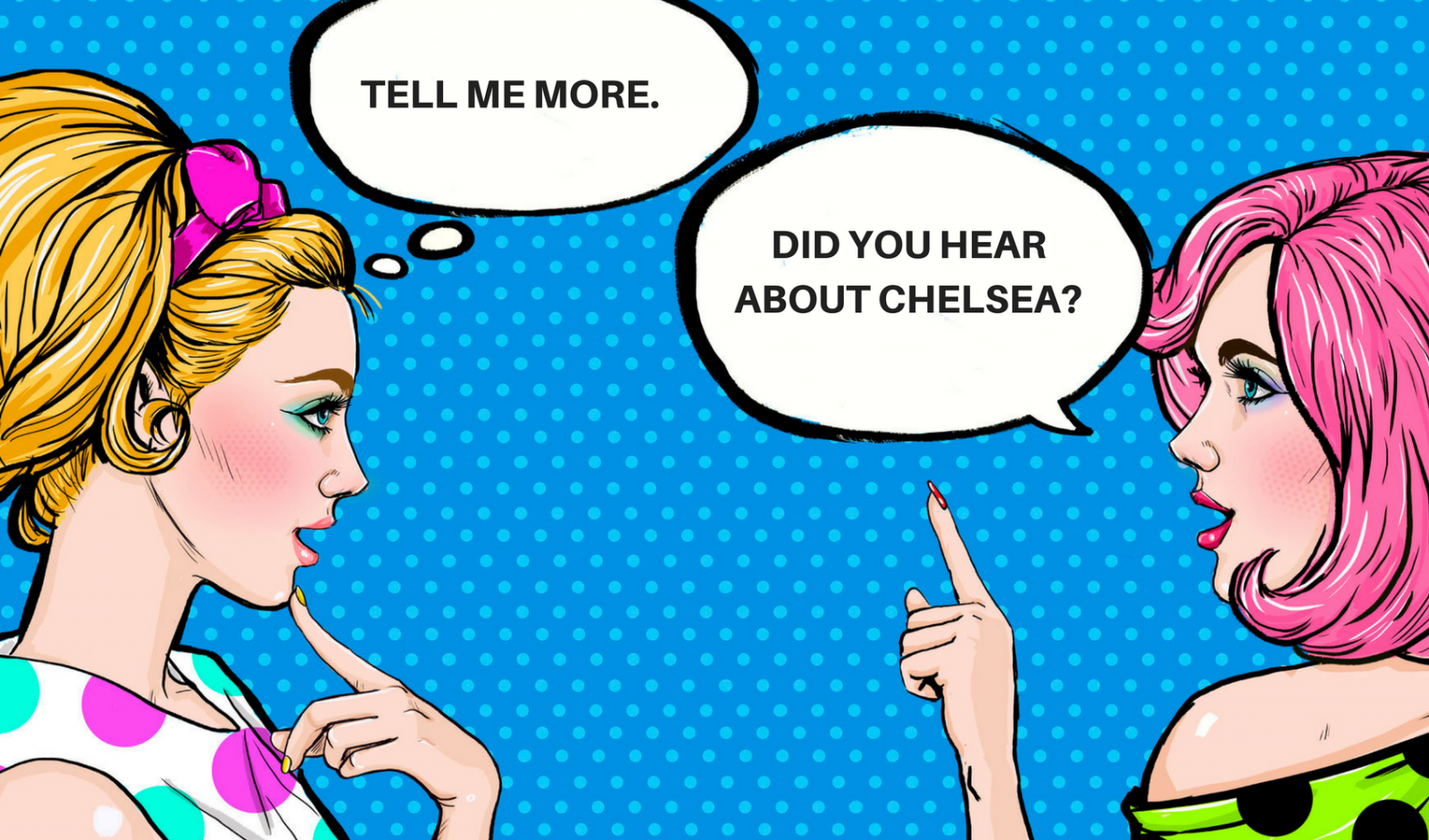Many charities have proven that telling individual stories is more motivating for potential donors than throwing statistics and numbers at them.
Telling potential donors that there are 10,000 people diagnosed with a disease per annum is not as effective as telling a story about one person facing that disease… and showing them what they can do to help.
Storytelling hammers fact-sharing when it comes to soliciting donations.
Assuming you already know this is the case, then the next stage is to tell stories in a really engaging way.
I often get involved in writing copy, and a trick I have found is that stories flow better, and are more engaging if they are personal, involving, directly thank the donor, and are witnessed.
By ‘witnessed’, I mean kind of like what preachers do. Don’t just tell someone a story, make it personal. Since good direct mail letters should be written in first person singular, to a donor, the writer should be telling the story from their own perspective. (If you didn’t know this – check out our Irresistible Communications course! It’s available for all members of The Fundraisingology Lab.
In a story about someone who has a disease, the writer should have met that person or their family where possible. It is more compelling to say ‘when I met Bill, I was shocked when he told me that…’ ‘it brought me close to tears…’ than just saying something like ‘let me tell you about Bill. He was diagnosed with ….’
Take a leaf from preachers – witness change.
A while back I found this story which was on the home page of Vision Australia’s website. (Yay! A charity with a beneficiary story on their HOME page!) Just as a thought exercise I re-wrote it.
See what you think.
Before:
Vision Australia’s Children’s Services provide teams of specialists to assist families with children who are blind or have low vision from birth to 18 years of age. Your donation means we can ensure more children like Chelsea (pictured) benefit from these specialised services.
Seven-year-old Chelsea Nagle, was born with no vision at all due to a rare genetic condition known as Leber’s Congenital Amaurosis. Her parents were totally shocked and distraught after finding out that their daughter was completely blind.
Vision Australia provides free specialist help and support to children who are blind or have low vision which is critical for families who are faced with the shocking knowledge that their child has little or no sight. Your donation today can help ensure our services are available when Australians need help the most.
When the occupational therapist started, Chelsea couldn’t even hold a toothbrush well enough to clean her teeth – with children who have no sight, there’s no impetus to reach for things or pick them up as a sighted child will and there’s no learning by observation. Everything has to be encouraged and taught. The therapist helped Chelsea to explore things by using her sense of touch and to develop more self-help skills such as eating with a spoon and fork, brushing her hair, all to build up her independence.
Learning to use a cane was something else that required physiotherapy – Chelsea had to work on her wrist, arm and shoulders so that she could learn to hold out the cane properly and be able to walk confidently.
Every single one of her achievements has taken a lot of effort. Vision Australia’s support has been a vitally important part of getting Chelsea ready and able to attend school. To prepare Chelsea for school we provided counselling, physiotherapy and occupational therapy.
“Vision Australia’s support has been extremely valuable and I don’t think we could have survived without it, and I don’t think Chelsea would have developed into the independent, active and adventurous child she is today.” Lynda Nagel (Chelsea’s mum).
Your support today can help provide more specialist and individualised advice and training – the building blocks for a lifetime of learning – to children like Chelsea.
That’s a powerful story. But told in a journalistic style — facts without witnessing.
Here’s my rewrite to add a human narrator. (I had to make up some facts to do this!)
After:
Part of my work is to speak with children like Chelsea and their parents about the vision diseases they’re fighting. Recently, I had just got off the phone assuring her mum, Linda Nagle, that I will do my utmost to ensure that the service that has helped Chelsea so much will continue.
Linda reiterated the huge impact services funded by caring and loving Australians have had. Then she took a big breath, paused and told me “It is so hard to describe the change in our lives,” she paused again. “From everyday things like brushing teeth to using the cane to get around safely, Melissa has been a godsend.”
Melissa is our trained occupational therapist – she’s completely funded by donations from people like you.
“Every day that I wake up I wonder what it would be like without the help of Vision – not just Melissa – but also the enormous support from the whole team. It also gives me a real lift to know that this is all funded by wonderful people. These are people across Australia I have never even met.”
By this point, tears were welling up in my eyes. Sometimes it just hits me, what a difference you are making in the lives of people like Chelsea!
“To have so much love and generosity from strangers is truly wonderful. If I have time to sit and think about it, I can’t help myself from crying.”
“I hope that you can tell them what a huge impact they are having on the life of my little child and our whole family.”
Please, make a donation today…
Putting the narrator into the story … revealing how the story impacted them … makes the story so much more real.
Because that’s the way we tell stories to the people we’re close to. We never merely recite the facts. We enthrall people with “witnessed” stories.
Do that with your non-profit stories, and they’ll go from good to irresistible!
Please share your thoughts by leaving your reply below. We’d love to learn from your experience.
Sean











6 Comments. Leave new
Great insights here. This can be challenging when the letter comes from the highest person in authority. CEOs and Board members don’t always have the opportunity to witness stories. Often, the personal connection is with fundraisers. Any thoughts on that?
Hi. It is a good point – but one that needs addressing by the charities. I am on the board of WWF Australia and ChildFund NZ and both encourage board members to get involved. But CEOs – it is essential that they do too!
Fundraisers too. Even if it is a charity like yours, investing in work overseas, the cost of a trip – which could be $10k plus staff time – is worth it. It will pay itself back for sure.
I think the signatory shouldn’t be a board member or CEO automatically, but should be the most senior person who can genuinely connect beneficiary and donor.
A great article Sean. I was just about to start my second draft for the Xmas appeal and straight away changed the direction! During the interview I was in tears, literally ruining my makeup listening to the parents tell me every little detail about how their baby died. It was powerful stuff. Usually our letters are signed off by the CEO but I’m going to use this opportunity to suggest it comes from me. I was there. I heard it. My story of listening to THEIR story is powerful in itself. I’ve always read that personal is better but it is sometimes hard to do when you’re trying to follow a successful ‘DM formula’. I’ll give this a try and see how it goes. Thanks Sean.
Wow that’s wonderful. It’s great to hear when an article actually makes a change for someone, so thank you. Sometimes I have written a letter which is pretty much the transcript from a conversation like the one you just described. I’ve just added a couple of things like the repeated ask, the clear offer, deadline added the PS and a Johnson box.
Let me know how it goes!
Sean,
I agree that the narrative point of view is more compelling. I also believe that accuracy and attention to detail matter. You have changed the spelling of Chelsea’s mum’s name from Lynda Nagel to Linda Nagle. The “before” version uses two spellings as well. While you admitted you made up some facts – the quote really cannot be embellished. If she didn’t say it that way – she didn’t say it that way. Lastly, the “before” version does not indicate that the services offered by Melissa or anyone else are “completely funded by donations from people like you”. Integrity surrounding these facts, and the use of funds generated from such an appeal are paramount. Creativity is great, but not at the expense of accuracy.
Hi
Thanks, Will. This is illustrative.
And yes, I made it up – my point was NOT that my blog readers make yours up – it was just showing the difference in the copy. Copywriters should ask the questions, and record what is actually set and always reflect accurately. But going fishing is good.
In practice, there is a lot more truthful information that should be used.
Never, ever make stuff up in real life. But for an illustrative blog, we have to.
Sean